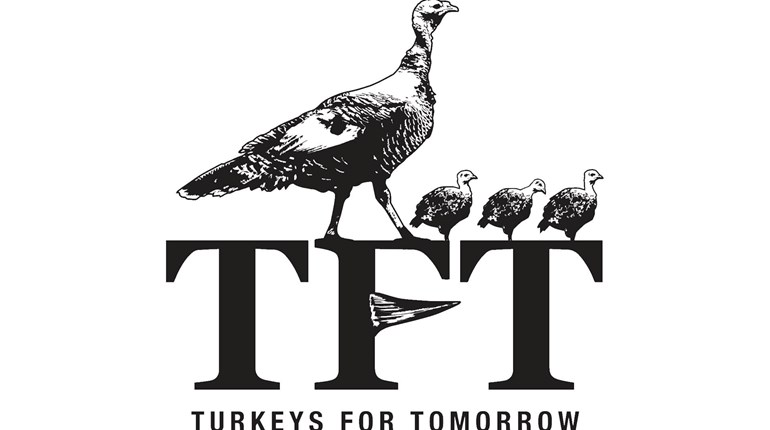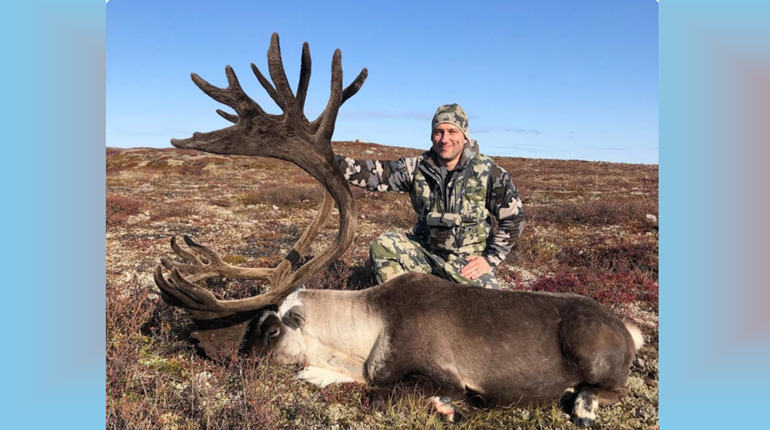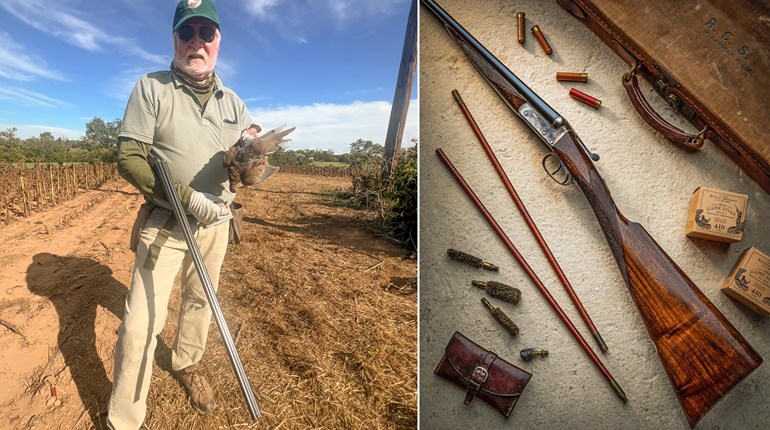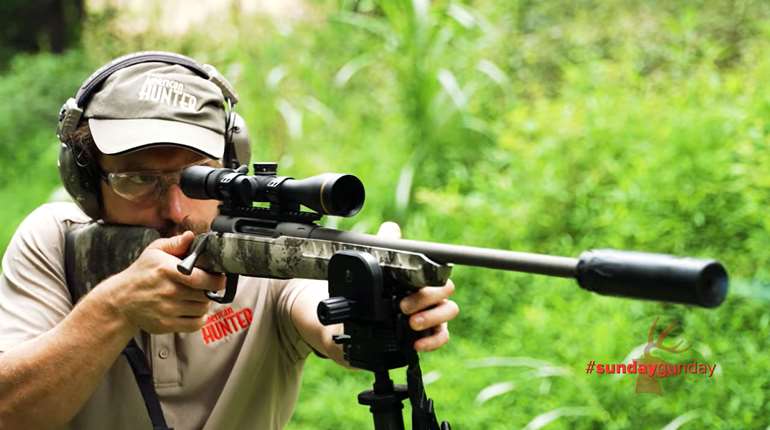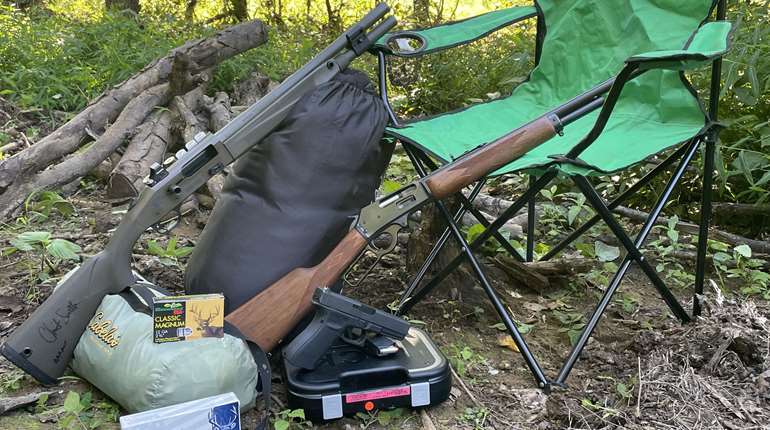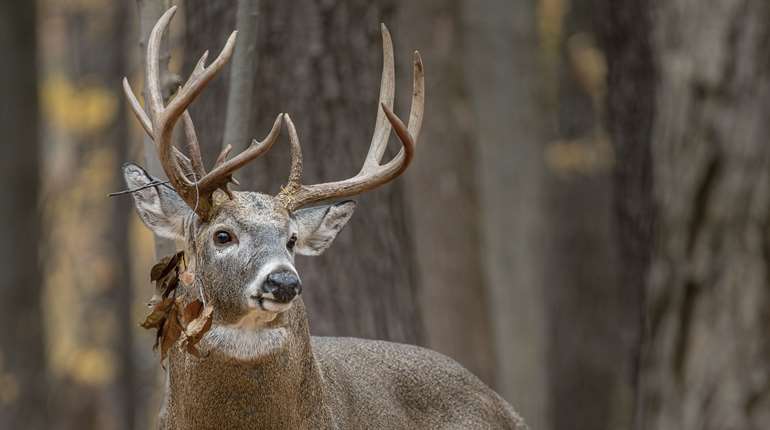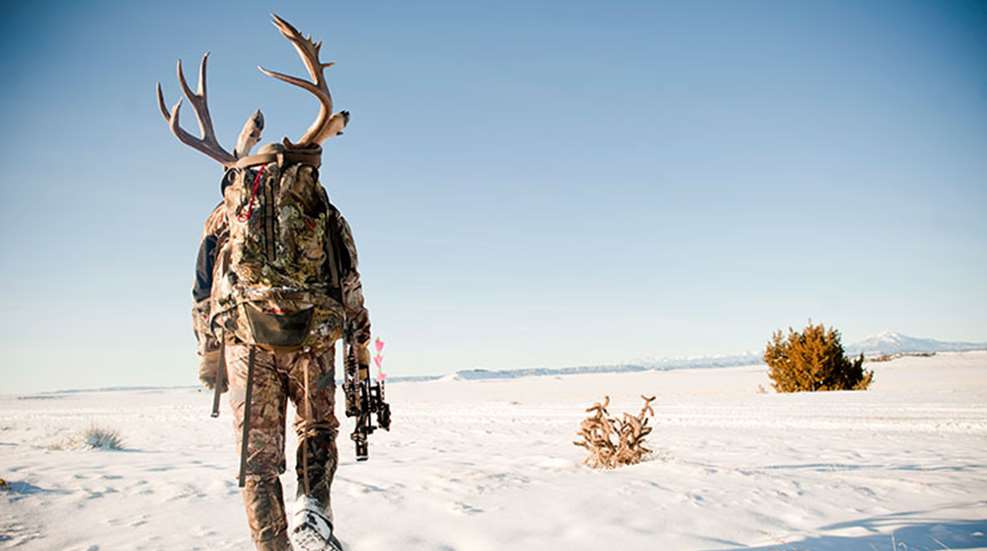
“The value of a trophy is computed directly in terms of personal investment in its acquisition.”
—Robert Ruark, Horn of the Hunter, 1952
The term “trophy hunting” is an unfortunate one because it suggests that the “trophy,” in the way of horns, antlers, tusks, skin, etc., is the sole reason for the hunt. However, the vast majority who hunt do so more for the challenge of an enriching experience, surrounded by the beauty of nature and in the company of good friends. For most, the “trophy” serves as a memento, a respectful appreciation of the animal taken and an acknowledgement of a great hunt.
In recent years, being called a “trophy” hunter has carried with it a negative connotation, but truth is, if we hunt, we actually are trophy hunters to a greater or lesser degree. Trophy by strict definition means “anything taken in war, hunting, competition, etc., especially when preserved as a memento; spoil, prize, or award, or anything serving as a token or evidence of victory, valor, skill, etc. Any memento or memorial.”
Avoiding or denying the “trophy hunter” label does not prevent many of us from dreaming of one day taking a “record-class” or “trophy” animal—one that’s large enough to meet or surpass a minimum-size requirement as stipulated in record books published by Boone & Crockett, Pope & Young, Rowland Ward or Safari Club International (SCI).
Reality dictates that animals large enough to qualify for inclusion in the record books are larger than average, and, being the largest specimens of their kind, they are generally older animals that have lived well beyond maturity. Therefore, they are much fewer in number, and because they have survived by successfully eluding danger and suspected threats, they are all the more challenging to find.
The purpose of recording an animal’s measurements was never to determine the success or failure of a hunt, but rather to record listings that would provide historical yardsticks by which horns, antlers, tusks and skulls that are attained through legal sport hunting are measured and judged for posterity. The lists not only tell a story about a given species’ dimensions, but also record when, where and by whom the animal was taken. This provides a geographic and historical perspective that becomes relevant when the details are viewed as a whole. Through the listings, areas that produce the largest specimens are acknowledged, and cyclical ups and downs become obvious over time. It’s the listings of “who-shot-the-animal” that has caused some of the biggest controversies involving egos and unethical behavior by those who have become obsessed with “making the book.”
But it’s important to keep record-class sizes in proper perspective and recognize that the animal you’re likely to take on most hunts will be of average size. The law of averages dictates that a majority of game taken on hunts in any given area will fall within an average size range and, therefore, most sport-hunted game will never qualify for inclusion in a record book.
What is important, regardless of an animal’s size, is that it must be mature before the decision to take it is made. If you’re determined and persistent there’s a good chance the hunt will result in the bagging of a mature, representative specimen. Should you be double-lucky enough to take an animal that qualifies for inclusion in a record book, then count your blessings because you’ve earned a place among a very small number of hunters. But never diminish the value of those mature, typical animals that fit into an average size range.
Beyond the increments of a tape measure, the most significant aspect of hunting is the experience of the hunt itself—the highs, the lows, the funny happenings, the difficulties, and when it does happen, the exhilaration of taking a mature animal you’ve worked hard for, no matter what the measurements. Stories of some of the largest trophies ever taken indicate that many came to bag unexpectedly. As an older, experienced hunter once observed, “The biggest trophies get taken when an animal makes a mistake, and a hunter just happens to be there.”
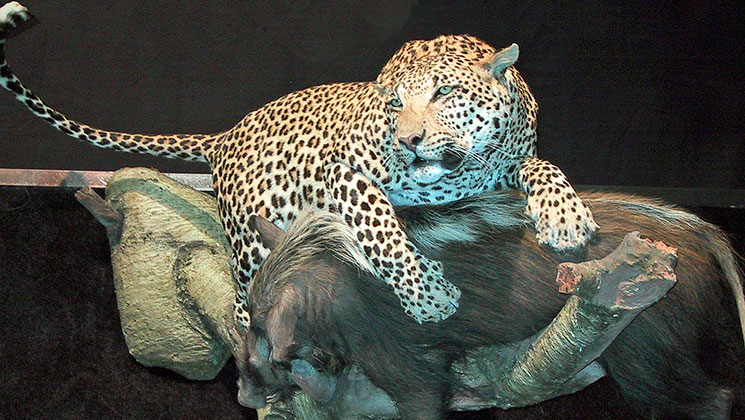
Many of the trophies displayed in private trophy rooms are stunning examples of great taxidermy work. These mounts are much more than just decorations on a wall and clearly illustrate how the art of taxidermy, at its best, can breathe life into skin and horns, virtually transforming them into something that looks ready to leap off the wall or walk out of the room. When viewing the best mounts, the horns, antlers or tusks almost become incidental to the animal’s facial expression or the dynamic action depicted in its lifelike position. In addition to the memories and experiences they evoke, mounted trophies often represent months or even years of saving, preparing and pursuing game in the field. The best taxidermy is an artful tribute to the life of an animal through the beauty and reality that is captured, and it becomes a timeless reminder of the dedication and effort invested in the hunt.
Every winter, SCI holds its Annual Hunters’ Convention, when more than 22,000 members have the opportunity to visit more than 1,100 exhibitors from around the world in order to book hunts and shop from a wide variety of hunting products. During the four-day convention, attendees are treated to the finest spectacle of wildlife taxidermy artwork in the world exhibited in a variety of settings throughout the convention floor.
Still, there are those who are fixated on an animal’s horn, antler or body size to the exclusion of all else, including the experience and effort of the hunt. They are the ones who arrive in a hunting camp clutching a record book in one hand and a tape measure in the other, and quoting the stats of record-breaking game. They have memorized the qualifying minimum measurements for putting a head in the “book”; they approach their hunt with lofty aspirations of bagging only “book” animals. The success of their hunt, in their minds, often hangs on fractions of an inch. I’ve even seen them fail to congratulate a companion’s good fortune when a “good” head that’s not their own is brought into camp.
Hemingway suffered from this kind of jealousy, or what might be called “trophy envy,” even admitting so in his book The Green Hills of Africa. When his hunting companion and good friend, Karl, collected a kudu that was several inches larger than his own kudu, Hemingway’s aggressively competitive spirit reared its ugly head, causing him to privately bemoan his friend’s success to his wife, Pauline, who harbored no sympathy for his “silly issues.”
In the grips of the most extreme trophy envy are those, it’s been told, who were so jealous and resentful of their hunting companion’s success that during the hunt communication between them ceased, and when it was time to return home they flew back on separate airplanes.
An ugly incident of this nature happened several years ago in Botswana between a husband and wife who were on safari. They were both hunting a full bag of game on a 21-day hunt, each with their own PH. The safari began in the Kalahari Desert and, within a few days, the wife was fortunate in bagging a magnificent black-maned lion. She returned to camp triumphantly that evening with the huge lion filling the back end of the Land Cruiser.
No one could have predicted the husband’s reaction upon seeing his wife’s enormous lion. He stood staring at the lion as if he’d been blindsided by an unexpected blow. He never uttered a word of congratulations to his rightfully proud and beaming wife; he was so undone by the idea of her taking such a lion, he succumbed to a funk that left him brooding in silence. Convinced that he stood little chance of finding a lion to match or better the size of his wife’s, he sulked for another day or two before he feigned a concocted illness and terminated the safari. Barely speaking to each other, the couple returned home more than two weeks early. Later, when the PH wrote to the wife requesting a photo of her lion, she told him that her husband lost the film on the journey home and no photos of her lion existed!
Ultimately, trophy value rests in the mind of the beholder and has little to do with size and record books. Writer and frequent safarist Robert Ruark knew his way around words and African game, and in his popular book Horn of the Hunter, he described his feelings about taking a very large buffalo that came too easily, by his way of thinking: “… this was a big buff and a handsome buff, but the littler one, the uglier one, is the one I got hanging on the wall. … You are not always successful at hunting, but there is satisfaction in the effort you put into the hunt—satisfaction surpassing the easy conquest, the freakish accident that provides reward without work.”
Ruark’s PH, the legendary Harry Selby, added his feelings about hunting Africa’s biggest game while they were on safari in Kenya. “You are not shooting an elephant,” Selby said. “You are shooting the symbol of his tusks. You are not shooting to kill. You are shooting to make immortal the thing you shoot. To kill just anything is a sin. To kill something that will be dead soon, but is so fine as to give you pleasure for years, is wonderful.”
I remember a nostalgic buffalo hunt with my father back when we lived in Kenya. We had walked many miles over several days tracking herds of buffalo that watered on the Galana River. They were moving some distance back into the bush by first light and, so far, we hadn’t been able to catch up to them before it was time to leave the tracks and retrace our steps to the river.
“Do you think we’ll ever find these buffalo?” I asked with more than a hint of frustration in my voice. “They seem to go farther out in the bush each day—like they know we’re following them.”
As I shoved another log into the fire to revive the flame, my father spoke: “Son, there’s no way of telling, but we’ll keep trying. You know, if it were easy, anybody could do it and the hunt wouldn’t have near the meaning it’s taking on now.”
“Yeah, I know,” I said. “It’s just that I feel so frustrated with not finding them that I hadn’t thought about it like that.”
“But don’t you see,” he continued, “That’s what hunting is all about. When an animal is difficult to find, he takes on greater value. Like most things in life, you’ll find the tougher the challenge, the greater the reward. You may feel frustrated right now, but if we take a buffalo tomorrow, you’ll appreciate him even more because of the effort we’ve already put into the hunt. The other part about hunting, for it to be fair, is there are no guarantees. An animal’s chance of getting away from you must be better than the odds of your killing him for it to be ‘sporting.’ Shooting isn’t the most important part of the hunt—more important is the effort you put in to it.”
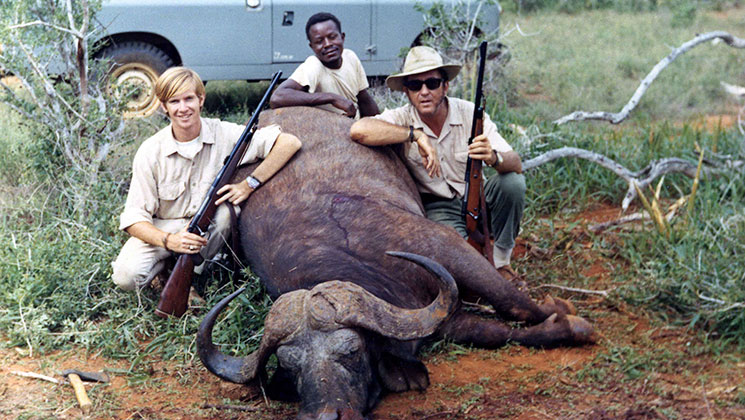
Sharing the greatest adventure of all with my father in Africa, I was fortunate to learn a few lessons about life at the same time. He instilled in me an understanding and appreciation for the challenges of hunting and fishing that he also valued. I’m often reminded of his words spoken that evening—words that helped carry me through a career of professional hunting and kept a proper perspective on sporting quests.
Together, my father and I hunted hard and finally faced and collected one of Africa’s toughest game animals. Standing next to my father as we snapped photos of the buffalo are treasured moments I will never forget. I will always hold dear several trophies from that hunt; the photos are amazing and the horns, which I have and still admire, symbolize so much of what I learned and experienced with my father. They also represent, in a way, the culmination of all the hunts we enjoyed together because that hunt was the last one we did together.
When the hunt results in a “trophy,” which is not necessarily a set of antlers or horns but which might be meat, feathers, fur, spurs, claws, skin, hair, scales, teeth, tusks or even a photo—those are the objects that enable us to not only remember, but also commemorate the hunt. All trophies, no matter what in nature, have two things in common: they acknowledge the animal and they bring back the memory of the hunting experience. In reality, the best “trophy” of all is the memory of the experience and of those you were with during the hunt.
Hunting's Value in Africa
Hunting, sport hunting, trophy hunting, whatever you want to call it, is not the problem for Africa’s animals and their conservation. Habitat loss due to expanding human populations and development is the biggest problem. But another serious issue is poaching, which is illegal and unregulated killing.
And yet, prompted by the dangerously inaccurate and biased messages of animal-rights groups and the media, people are only too quick to jump onto the anti-hunting bandwagon, often substituting “poaching” with “hunting’” as if they were one and the same. Animal-rights groups and well-intentioned people who want to stop hunting to help Africa’s animals are way off track in their message. There’s a big difference between managed and regulated hunting and poaching.
In 1977, Kenya banned all consumptive wildlife use, including trophy hunting. At that time, Kenya and South Africa had approximately the same population of game: between 1 million and 1.5 million head. Over the next 35 years, however, Kenya’s wildlife numbers decreased by about 80 percent to approximately 300,000 head of game—an average loss of between 4 percent and 4.5 percent per year due to poaching. Meanwhile, in SA, where a policy of full wildlife utilization was adopted, including a thriving trophy hunting industry, wildlife flourished to in excess of 20 million head of game.
Trophy hunting in Southern Africa is carefully regulated to ensure strict quotas are adhered to and practices are humane, ethical and of the highest standards. The hunting of any species listed by the Convention on International Trade in Endangered Species of Wild Fauna and Flora (CITES) is subject to additional international import and export laws. Poaching, on the other hand, is the illegal, ungovernable and indiscriminate slaughter of wildlife.












